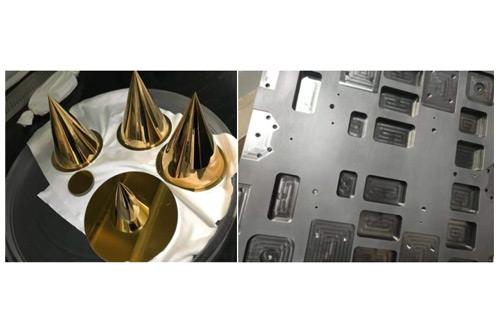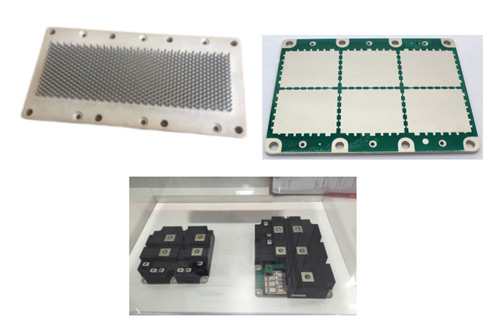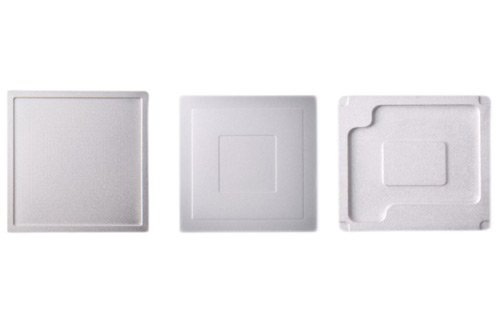
| Material # |
Density (g/cm3) |
Elastic modulus (Gpa) |
Tensile strength (Mpa) |
Yield strength (Mpa) |
Thermal conductivity (W/mK) |
Thermal expansion
(10-6/℃) |
Elongation (%) |
Hardness (HB) |
| 2009/SiC/15p | 2.78 | 96 | 250 | 120 | 138 | 18.5 | 10 | 68 |
|
2009/SiC/20p |
2.80 | 103 | 270 | 140 | 146 | 17.4 | 9 | 72 |
|
2009/SiC/25p |
2.88 | 115 | 280 | 150 | 150 | 16.1 | 8 | 90 |
|
6061/SiC/15p |
2.74 | 95 | 240 | 116 | 140 | 18.4 | 9 | 66 |
|
6061/SiC/20p |
2.80 | 103 | 265 | 132 | 150 | 17 | 8 | 70 |
|
6061/SiC/25p |
2.84 | 121 | 274 | 136 | 146 | 15.8 | 7 | 84 |
|
6061/SiC/40p |
2.90 | 140 | 285 | 183 | 130 | 13 | 4 | 98 |
With its lightweight, efficient dynamic response and maximized life cycle, AlSiC can replace titanium alloy, steel and carbon fiber composite materials on a variety of precision instruments.
◆AlSiC structures are light weight and have high strength and stiffness, and low thermal expansion.
◆AlSiC parts can be net shaped or near net shaped on complex structures
◆AlSiC structural parts can be inlaid with other materials (titanium alloy, stainless steel, Kovar alloy, etc. or other intolerant non-metals)
◆AlSiC surface can be mirror-finished after vapor deposition
◆The surface can be plated with nickel, gold, silver, copper with good plating performance.
Application: AlSiC can be used in heat-resistant deformation structural parts, wear-resistant structural parts, lightweight aviation, aerospace structural parts, ball mounter and robots.












